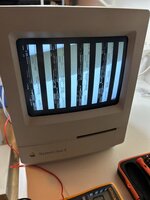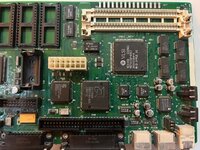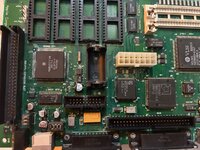blindowl
Well-known member
So I have this re-capped Classic II that used to work, but only sometimes (CRT wouldn't turn on). I decided to do another cleaning of the logic board to get rid of some corrosion. I soaked it in vinegar over the night, rinsed it with water and let it dry. Now the machine doesn't start at all... No life from the fan, HDD or CRT – but there is a fast clicking sound from the speaker, tick-tick-tick-tick-tick.. I've measured the 12 V rail on the floppy port and it's unstable just around 5 V (before the cleaning: 11,98 and 5 V). I'm suspecting there is a short somewhere and I haven't let the machine run more than a few seconds.
Any advice where to start troubleshooting? What can cause the issue described above, what might be shorted with what? And where to start measuring? I've found the Bomarc schematics but I find them a bit hard to follow.
Any advice where to start troubleshooting? What can cause the issue described above, what might be shorted with what? And where to start measuring? I've found the Bomarc schematics but I find them a bit hard to follow.



